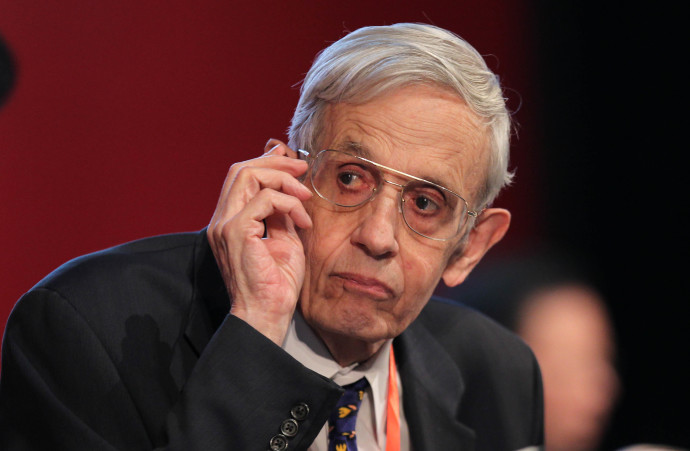|
|
John Cassidy explains in the New Yorker:
Thanks to the sterling efforts of Sylvia Nasar, Ron Howard, and Russell Crowe, many people are aware that John Nash, the Princeton mathematician who was killed over the weekend in a car crash on the New Jersey Turnpike, lived a remarkable life. It included early academic stardom, decades of struggling with schizophrenia, and, in 1994, a shared Nobel Memorial Prize in Economic Sciences. But outside the field of economics, Nash’s contribution to game theory, for which he was awarded the Nobel, remains rather less well understood.
Although it is often used in economics, game theory can be applied to any venue where people, or other decision makers, interact strategically and follow rules-based behavior. The setting could be nuclear negotiations, such as the ones currently taking place between Iran and the great powers. It could be a product market, in which a number of firms compete for business. Or it could be a political campaign, in which various candidates try to outdo each other. The word “strategically” is important, because the various players, in choosing from a variety of possible moves, take account of one another’s actions, or likely actions. And the phrase “rules-based” means that the players are acting purposefully and seeking to maximize their own advantages, rather than behaving passively, or randomly.
Full Story

The reason is its broad applicability, which extends well beyond economics. Take, for example, the problem of deciding which side of the road to drive on—a question that clearly involves trying to figure out what everybody else will do. If you are living in the United States, where custom and law dictate using the right lane, sticking to that lane is a Nash equilibrium: it gives you the best chance of getting to your destination in one piece. And since the same logic applies to everybody else, the “stay on the right” solution is pretty stable.
[...]
To return to the driving example, a moment’s reflection should persuade you that driving on the left can also be a best-response equilibrium. In the United Kingdom and many other countries, it’s the one that has been adopted and enshrined into law. But why do Americans drive on the right and Brits on the left? And if we were starting out from scratch, which convention would be adopted: left or right? Nash, and the many economists who have followed in his footsteps over the past sixty-five years, can’t necessarily provide an answer.
This is just one of the drawbacks of Nash’s approach. Another problem is that game theory is mentally taxing. In many games, including some that initially seem pretty simple, finding the Nash equilibria can be very difficult, at least for ordinary mortals. And when the rules of the game aren’t clear, or when some information is hidden, or when the passage of time is introduced into the analysis, even seasoned game theorists sometimes have a hard time figuring things out. To be sure, various refinements of the Nash equilibrium can be called upon to deal with some of these complications, and there are also refinements of the refinements—but they are even more complicated.
Categories: Strategic Management 1 | Topics | Strategy Formulation |
Posted on Sep 30, 15
|


